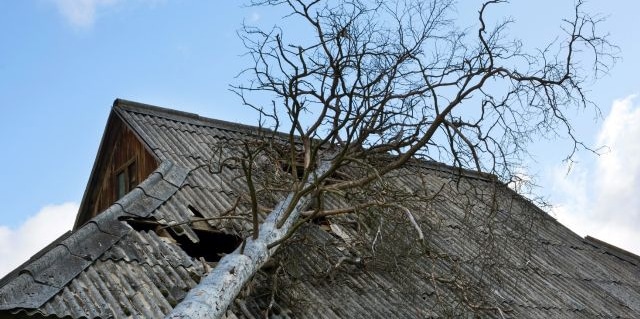Trees bring beauty and shade to your property, but sometimes they also bring hidden risks. Strong winds, heavy storms, or decay can turn a once-sturdy tree into a serious hazard. A falling tree can cause expensive damage—or worse, serious injuries. The good news? Spotting the warning signs early can help protect your home, your family, and your wallet. Here’s what to look for to keep your trees safe and standing strong.
Falling Branches
If you notice lots of dead branches on the ground, take a closer look at your tree. Trees that are struggling will start to send water and nutrients to the healthier branches, leaving the weaker ones to die. This happens often when trees have root rot. Keep your tree pruned and watch for the number of dead branches, so you can act if necessary.
Bare Branches
Deciduous trees (those that lose their leaves each winter) can give you clues to their health. If they don’t sprout new leaves during the growing season, that’s a sign of distress. If they lose their leaves too early in the fall, that could be concerning, too. These types of trees should lose their leaves from the outside in; if leaves die closer to the trunk or cling to branches rather than falling, the tree may have circulatory issues.
Cracks, Holes, or Split Trunks
Large holes, a split trunk, or deep cracks are signs of structural weakness. Trees with V-shaped trunk splits are especially vulnerable as their joints weaken over time. If your tree has a hollow section, it may attract nesting animals that can further damage it. An arborist may be needed to stabilize it in any of these cases.
Bald Spots and Bark Damage
A healthy tree will shed old bark and replace it with new growth. If bark is missing, peeling excessively, or has deep gashes and indents (known as cankers), it may be suffering from bacterial or fungal infections. You will need to clear those up or you risk losing the tree.
Fungus Growth
The presence of large fungi, such as wood conchs (bracket fungus), on the trunk suggests internal rot. Mushrooms growing at the base indicate that they may be feeding on rotting roots, which can weaken the tree’s foundation. You will need to act, either to resolve the issues caused by the fungus or remove the tree altogether.
Exposed Roots
Roots visible above ground may signal that the tree is no longer securely anchored. Cracked soil around the base can indicate roots are lifting, which increases the risk of the tree toppling over. This causes an immediate danger and should be resolved as soon as possible.
Vines Taking Over
While vines can add aesthetic appeal, they may also suffocate a tree by trapping moisture, leading to rot, blocking sunlight, and attracting insects. Carefully cut the vines at the base of the tree close to the ground, being careful not to damage the tree bark. (Avoid pulling the vines as that could damage the tree.) If the vine returns or is invasive, consult an expert to help you remove it.
Carpenter Ants
Large black ants on your tree may indicate an infestation. These ants prefer rotting wood, meaning your tree may already be compromised. Look for sawdust piles near the base as a telltale sign. If you suspect carpenter ants, get a professional consult. You may need to remove the tree.
Leaning Trees
Trees can naturally lean but be aware of when the angle is too much. A noticeable lean of 15 degrees or more could signal weak or rotted roots. Strong winds or loose soil can contribute to this issue. While some trees can be straightened if healthy, others may require removal.
Problematic Locations
Watch for changes in your trees in these scenarios:
- Trees near water sources may become waterlogged, leading to root decay.
- Poor drainage around trees on your property can weaken root systems.
- Trees left exposed after nearby trees are removed may struggle with sudden changes in wind and sunlight.
Why You Should Act
Distressed or dying trees can pose a serious hazard. Not only are dead trees an eyesore, but they are also more prone to falling, potentially injuring someone or damaging your property. Additionally, dead trees attract pests like termites and rodents, which could spread to your home.
This article is furnished by California Casualty, providing auto and home insurance to educators, law enforcement officers, firefighters, and nurses. Get a quote at 1.866.704.8614 or www.calcas.com.
- Party Potluck Recipes - December 11, 2025
- Classroom Holiday Traditions from Around the World - December 5, 2025
- You were probably raised by a nurse if… - November 30, 2025

